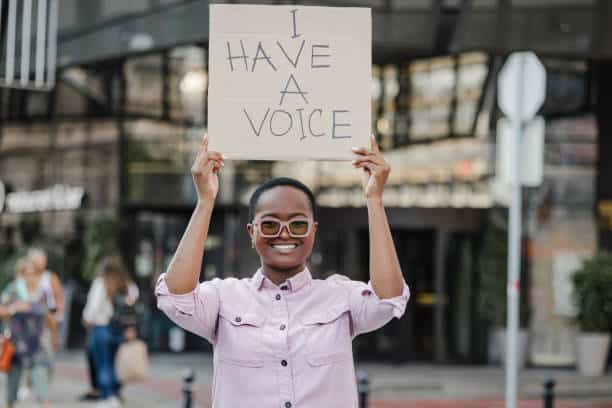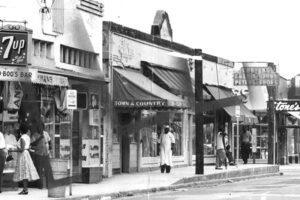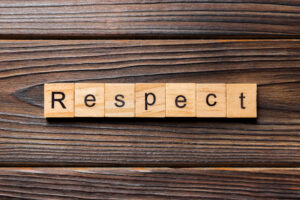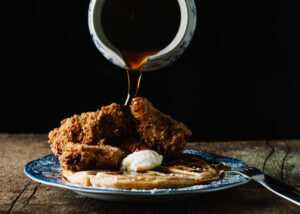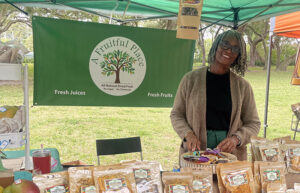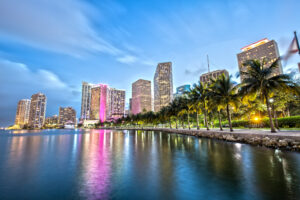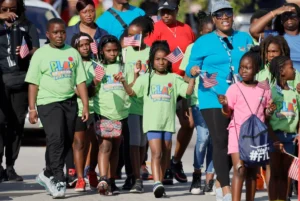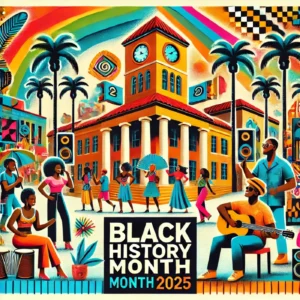Since the beginning of the COVID-19 pandemic in 2020, it’s felt like we are actively living in a tumultuous time in human history. In just over four years we have seen a global health crisis, the Black Lives Matter movement, record-setting weather storms, skyrocketing inflation, major wars in Ukraine and Gaza, and another Trump presidency – remember the murder hornets?! It’s been a nonstop ride through major event after major event.
Despite the many historical events we are persevering through, it’s important to find comfort in the resilience of our community. We have succeeded through difficult times in history before. During major events, it is a smart idea to reflect on the past and how our ancestors not only survived, but leveled up and thrived.
As we begin 2025, extreme events continue to be the norm. In January, Donald Trump announced that all federal organizations and programs would be ending DEI programs. While I don’t see any evidence of how this lowers the cost of eggs or gas, it does confirm our fears about his ruling: his administration will do more harm than good for communities of color.
After this announcement, many private companies also decided to put a stop to DEI work. The list includes major corporations like Walmart, Target, McDonalds, Amazon, Meta, Lowes, and more. Many of us visit or support these businesses regularly.
One of the best protest tactics used during the civil rights movement and beyond is boycotting. When we mess with big businesses’ money, we get results. Here is a quick introduction to how those tactics were used and how we can use them to demand progress today.
RELATED: From Spending to Investing: How to Keep Your Money in the Black Community
The Quietest Form of Protest
Boycotts are a strong form of non-violent civil protest known for demanding attention effectively. By refusing to spend money on goods and services until changes to the system are made, this tactic creates the perfect storm. The government is unable to punish protesters, and the withholding of spending money causes an economic need to address the problem at hand.
The civil rights movement made drastic progress when boycotting was used as a form of protest. Throughout towns and cities in the South, Black citizens mobilized their local community and chose inconvenience over oppression.
One of the most famous boycotting protests happened in Montgomery, Alabama. Right after Rosa Parks was arrested for maintaining her seat on a bus despite local laws that stated she had to stand for white passengers, the community began organizing to end segregation on public transportation. Led by the local NAACP chapter and leaders like Women’s Political Council President JoAnn Robinson and Martin Luther King Jr., the community agreed to boycott the bus system on December 5th, 1955. Ninety percent of the city’s Black residents did not ride the bus.
The protest gained some press on local news channels and papers, so leaders decided to extend the boycott. For over a year, after long walks to work, coordinating massive carpool systems, and fighting the city’s attempts to criminalize their behavior, the Supreme Court ruled segregation on buses unconstitutional.
After its success, boycotts took place throughout the South, with Black communities choosing not to spend at stores, avoiding public transportation, and strategically controlling other spending habits until changes were made.
Today, we have seen boycotting used across the country for several other civil rights movements. Thanks to the leaders of our past, progress has been made, but we still have a journey ahead of us. Let’s dive into how we use this form of protest to create positive change in 2025.
What Boycotting Realistically Looks Like in 2025
While it’s easy to feel empowered by these stories and decide to boycott businesses, it’s not as easy in practice. For example, many people living in small towns or rural communities often have limited access to other stores for groceries and home goods. The ease of ordering an Amazon package that you can get delivered tomorrow is one that not many people will simply give up. What does boycotting look like in modern times?
There are levels to this. If you have to shop at Walmart or are too busy to figure out an alternative to Amazon, your feelings and needs are completely valid. These businesses have designed operational processes that have made consumerism highly convenient. Let’s dive into three “boycotting tiers” that you can choose from depending on your life structure.
Shop Minority Owned
The corporations that have chosen to pull support from their diversity and equity programs are some of the largest in the world. In reality, many of them are hard to avoid. If your only option is to shop at one of the businesses listed above, there are still ways for you to use your money to support our community.
Your best solution is to seek out Black- and minority-owned businesses that are represented on the shelves. Despite the rollback on DEI efforts, many brands sold from these businesses are minority-owned. Intentionally shopping just these brands is certainly its own form of protest.
Here are some resources to guide you:
Boycott What You Don’t Need
Many of us can be realistic and recognize that while we enjoy many of the businesses that are cutting DEI programs, we do not need them. Like, need them to live. I’m looking at Meta, Amazon (convenience is not a need!), and Brown-Forman.
Each of these companies has a competitor that recognized the need for prioritizing inclusivity and it might be time for us to explore those options.
Instead of Meta platforms like Facebook and Instagram, check out YouTube, BlueSky, and Snapchat (which has stood by their commitment to DEI).
If you can go the extra mile and find alternatives to Walmart and Target, this is feasible in most medium-to-large cities. Stop by businesses that have stood by their DEI efforts like Costco, Wegmans, Trader Joe’s, or a local grocer.
For the whiskey connoisseurs and cocktail lovers, Brown-Forman owns many of the spirit labels we see regularly, including Jack Daniel’s and El Jimador Tequila. Fortunately, this is an easy and enjoyable boycott as there are several outstanding Black-owned spirits from around the world! See this list for inspiration and discover your new favorite.
Full Boycott Mode Activated
If you are ready and able to fully commit to boycotts of these major brands, we love to see it! Here are some places to shop:
- Naspora: the largest online marketplace featuring Black-owned brands from toilet paper and cleaning supplies to fashion and beauty. Call it Black Amazon!
- Costco – committed to DEI
- Trader Joe’s – committed to DEI
- For social media: YouTube, BlueSky, and Snapchat
- Car companies supporting DEI: Jeep, Subaru, Volkswagon, and Audi. Nissan, Toyota, and Ford have all rolled back their DEI efforts.
- Shop local: discover specialty grocery stores, fashion boutiques, farmer’s markets, and more in your local area.
by Camille Cobbs

